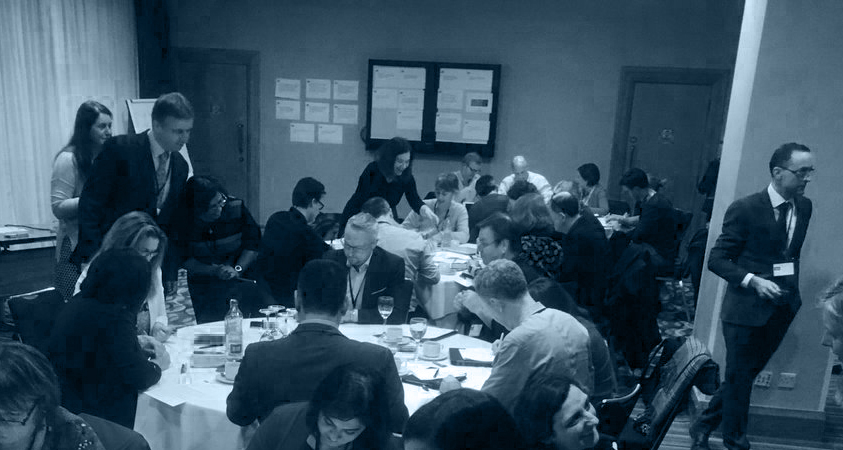|
Listen to this post
Getting your Trinity Audio player ready...
|
co-authored by Lawrie Phipps, James Clay, and Chris Thomson
It’s been three years since we ran the the first Jisc Digital Leaders Program. During the program we have have emphasized the need for leaders in education to model the behavioral change that they wish to see in digital. “Be more digital”, “Write a digital strategy”, “Go do Twitter” are things we have heard many times, and these are sometimes the reasons that delegates attend the course. We hoped to give leaders contexts beyond tasks within digital, to provide a way to discuss the implications of digital tools and places that were not just to-do or top-ten lists.
We built the individual digital practice elements of that first course around what delegates gained from doing the Visitor and Resident mapping process. At the time, we were intent on getting people away from assumptions that digital capability was defined by their identities (especially not their “generational identity”), and thought that the V&R model gave them a new place from which to orient the conversations we wanted people to have about their practices.
For the most part, we were correct. We did have and facilitate conversations that went beyond both top-ten tech lists and “I am X identity,” and brought people together for conversations about what they want and need to do, and what their motivations are. In the setting up of the V&R model we were careful to discuss them as modes of behavior, not identity types. However, we have continued to see, through three years of iterations of the course, an impulse to pigeonhole, to identify themselves and others as “visitors” or “residents”; creating a barrier to freeing ourselves up to having new conversations around digital.
As much as the metaphor freed us from the tyranny of generational stereotypes, it opened up a debate around the nature of what it means to be “resident” or “visitor”, with participants asking what is “right”, what is best, and how to become more of one or the other. This was never our intention. Substituting the stereotype with a metaphor still, to some extent, obfuscated the real aim – to discuss practice in context. It is difficult to move people away from value judgments around practice, and harder still when they are couched in language that seem to involve personal identity.
On the course we want our leaders and future leaders to have a more nuanced understanding of what it means to practice in a time of ubiquitous digital.
We have arrived at the point where we need to go beyond metaphor. Rather than annotating a metaphorical model with allusions to practice and motivation, we will start with the practices, the behaviors, and motivations we want people to reflect upon.
The use of tension pairs to surface behaviors and practices has proven effective as a baseline for change; a visual tool for identifying where both individuals and organisations are in their digital practice and their motivations, and importantly for the digital leaders program, where they want to move their practice to. The new iteration of this element of the workshop will be more tailored to support delegates in identifying what the most appropriate tension pairs are for their context.
Rather than using the visitor-resident continuum as one axis we intend to provide a range of continua composed of actions and behaviors, instead of identities. For example, we might suggest that leaders map themselves against a broadcast – engagement axis. We might even solicit tension pairs from the room. We think this small modification to the leadership course format will make it easier to dig into the important content that has always been a core part of the program: an engagement with practice, with current behaviors, such that people are more capable of strategic thinking about the ways they want or need to change what they are doing, and what if any role digital tools and places can play in those changes. We think it’s time in our work to give people opportunities to visualize and develop their approaches to and within digital, to center what people want to do, first. Identity is always an important part of why and how people do what they do, but it doesn’t have to over-determine their practices. Our intention is to open doors, not close them by making people think that certain paths are closed because of who they are.
